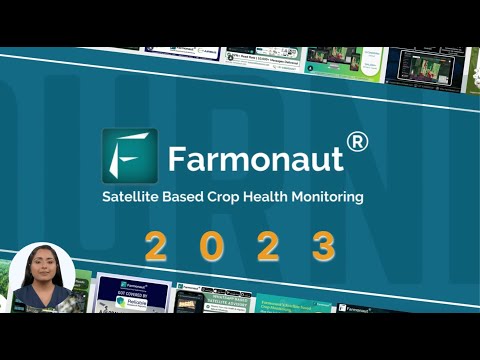Unlocking Financial Growth: Strategies for Controlled Environment Agriculture in 2024
“In Q4 2024, a leading CEA company achieved revenue increases and reduced operating expenses, improving gross profit margins.”
“Strategic cost-cutting and capital preservation efforts led to a debt-free status for a key player in the CEA industry.”

As we delve into the financial landscape of Controlled Environment Agriculture (CEA) in 2024, we’re witnessing a transformative period marked by strategic growth, innovative approaches, and a renewed focus on financial sustainability. In this comprehensive analysis, we’ll explore the latest industry trends, examine Q4 2024 performance metrics, and uncover the strategies driving financial growth in this evolving sector.
Q4 2024 Financial Results: A Closer Look
The fourth quarter of 2024 has presented a mixed but promising picture for the CEA industry. Let’s break down the key financial indicators:
- Revenue: Increased to $0.4 million, up from $0.3 million in Q4 2023
- Net Bookings: Rose to $0.5 million, compared to $0.1 million in the previous year
- Gross Loss: Improved to $0.2 million from $0.3 million in Q4 2023
- Operating Expenses: Slightly increased to $0.8 million from $0.7 million
- Net Loss: Remained stable at $1.0 million
These figures reflect a company in transition, balancing growth initiatives with cost management strategies. The increase in revenue and net bookings signals growing market demand for CEA solutions, while the improvement in gross loss suggests more efficient operations.
Strategic Cost-Cutting and Capital Preservation
Throughout 2024, we’ve observed a concerted effort towards lean cost structures and capital preservation. Key measures included:
- Reduction in headcount
- Elimination of product development costs
- Lowering of business development expenses
These efforts culminated in a significant 16% reduction in operating expenses compared to the previous year. This disciplined approach to cost management has been crucial in maintaining the company’s debt-free status, a notable achievement in the capital-intensive CEA sector.

Ecosystem Development and Expansion Strategies
In the evolving landscape of CEA, companies are not just focusing on internal growth but also on expanding their ecosystem. A prime example is the recent acquisition agreement with Fat Panda, a Canadian retailer and manufacturer in the e-cigarette and vape industry. This strategic move aims to:
- Leverage Fat Panda’s strong retail footprint
- Integrate vertically aligned operations
- Tap into consistent profitability streams
- Accelerate expansion into new markets
Such acquisitions represent a broader trend in the CEA industry, where companies are diversifying their portfolios and seeking synergies across related sectors to drive growth and create long-term value for shareholders.
Cash Flow Management and Asset Utilization
Effective cash flow management remains a cornerstone of financial health in the CEA industry. As of December 31, 2024, the company reported:
- Cash and cash equivalents: $9.5 million
- Working capital decrease: $3.0 million (compared to December 31, 2023)
While the decrease in working capital might raise concerns, it’s essential to view this in the context of the company’s strategic investments and cost-cutting measures. The maintenance of a substantial cash reserve, coupled with a debt-free status, positions the company favorably for future growth opportunities and potential market volatility.
Innovations in CEA: The Role of Technology
The CEA industry is increasingly leveraging technology to drive efficiency and sustainability. Companies like Farmonaut are at the forefront of this technological revolution, offering advanced solutions for precision agriculture and farm management.
Farmonaut’s satellite-based crop health monitoring and AI-driven advisory systems are transforming how CEA operations are managed. These technologies enable:
- Real-time crop health assessment
- Optimized resource allocation
- Data-driven decision making
- Enhanced sustainability practices
For CEA companies looking to improve their operational efficiency and environmental footprint, integrating such technologies can be a game-changer. Farmonaut’s carbon footprinting solution, for instance, allows businesses to monitor and reduce their environmental impact, aligning with growing market demands for sustainable agriculture practices.
Financial Performance Comparison
| Financial Metric | Q4 2024 Value | Q4 2023 Value | Percentage Change |
|---|---|---|---|
| Revenue | $417,447 | $251,093 | +66.25% |
| Operating Expenses | $849,503 | $709,467 | +19.74% |
| Gross Profit (Loss) | $(174,896) | $(285,826) | +38.81% (improvement) |
| Cash and Cash Equivalents | $9,452,826 | $12,508,251 | -24.43% |
| Total Liabilities | $1,164,065 | $1,510,875 | -22.95% |
This table clearly illustrates the financial progress made in Q4 2024 compared to the previous year. The significant increase in revenue and improvement in gross loss are particularly noteworthy, indicating a positive trajectory for the company’s core operations.
Challenges and Opportunities in the CEA Market
While the financial results show promise, the CEA industry continues to face challenges:
- High initial capital requirements
- Evolving regulatory landscape
- Need for continuous technological innovation
- Market volatility and competition
However, these challenges also present opportunities for companies that can adapt and innovate. The integration of advanced technologies, such as those offered by Farmonaut, can help CEA operations overcome these hurdles. For instance, Farmonaut’s blockchain-based traceability solution addresses the growing demand for transparency in agricultural supply chains, potentially opening new market opportunities for CEA companies.
Future Outlook and Growth Strategies
Looking ahead, several strategies emerge as key drivers for financial growth in the CEA sector:
- Technological Integration: Embracing AI, IoT, and data analytics to optimize operations and reduce costs.
- Sustainable Practices: Focusing on environmentally friendly methods to meet growing consumer demand for sustainable products.
- Strategic Partnerships: Collaborating with technology providers, retailers, and other stakeholders to expand market reach.
- Diversification: Exploring new product lines and markets to reduce dependency on single revenue streams.
- Efficient Resource Management: Implementing advanced systems for better control over energy, water, and other resources.
Companies that successfully implement these strategies are likely to see improved financial performance and increased market share in the coming years.
The Role of Financial Technology in CEA
Financial technology is playing an increasingly important role in the CEA industry. Solutions like Farmonaut’s crop loan and insurance verification system are streamlining access to financing for farmers and reducing risks for lenders. This integration of fintech with agriculture can potentially unlock new sources of capital for CEA companies, fueling further growth and innovation.
Moreover, the use of data-driven financial management tools can help CEA operations make more informed decisions about investments, resource allocation, and risk management. As the industry continues to mature, we expect to see more sophisticated financial products and services tailored specifically to the needs of CEA companies.
Sustainability and ESG Considerations
Environmental, Social, and Governance (ESG) factors are becoming increasingly important in the CEA industry. Investors and consumers alike are placing greater emphasis on sustainable practices and responsible business operations. CEA companies that prioritize sustainability not only contribute to environmental conservation but also position themselves favorably in the market.
Farmonaut’s technologies, such as their fleet management solution, can help CEA operations optimize their logistics and reduce their carbon footprint. By leveraging such tools, companies can improve their ESG profiles, potentially attracting more investors and environmentally conscious consumers.
Conclusion: Navigating the Future of CEA
As we look towards the future of Controlled Environment Agriculture, it’s clear that financial growth will be driven by a combination of technological innovation, strategic management, and sustainable practices. The Q4 2024 results we’ve examined demonstrate the potential for growth in this sector, even in the face of challenges.
Companies that can effectively balance cost management with strategic investments, leverage advanced technologies like those offered by Farmonaut, and adapt to changing market demands are likely to thrive. As the industry continues to evolve, we anticipate seeing more innovative financial strategies, deeper integration of technology in agricultural processes, and a greater focus on sustainability.
For investors, industry professionals, and anyone interested in the future of agriculture, the CEA sector presents exciting opportunities. By staying informed about financial trends, technological advancements, and market dynamics, stakeholders can make more informed decisions and contribute to the growth of this vital industry.
FAQ Section
- Q: What are the key financial indicators for CEA companies in 2024?
A: Key indicators include revenue growth, operating expense reduction, gross profit improvement, and cash flow management. Companies are also focusing on maintaining debt-free status and strategic acquisitions for expansion. - Q: How is technology impacting financial growth in the CEA industry?
A: Technologies like AI-driven crop monitoring, blockchain-based traceability, and advanced resource management systems are helping CEA companies optimize operations, reduce costs, and improve yields, directly impacting financial performance. - Q: What role does sustainability play in the financial strategies of CEA companies?
A: Sustainability is becoming a crucial factor in financial strategies, with companies investing in eco-friendly practices to meet consumer demands, comply with regulations, and attract ESG-focused investors. - Q: How are CEA companies managing cash flow and capital preservation?
A: Companies are implementing lean cost structures, reducing non-essential expenses, and focusing on capital-efficient growth strategies. Some are also exploring innovative financing options and strategic partnerships. - Q: What are the main challenges facing CEA companies in terms of financial growth?
A: Key challenges include high initial capital requirements, market volatility, regulatory uncertainties, and the need for continuous technological innovation to stay competitive.
Earn With Farmonaut: Join Farmonaut’s Affiliate Program
Earn 20% recurring commission with Farmonaut’s affiliate program by sharing your promo code and helping farmers save 10%. Onboard 10 Elite farmers monthly to earn a minimum of $148,000 annually—start now and grow your income!
Access Farmonaut’s Advanced Agricultural Solutions
Explore Farmonaut’s suite of advanced agricultural technologies to enhance your farming operations:
For developers interested in integrating Farmonaut’s powerful satellite and weather data into their applications, check out our API and API Developer Documentation.






